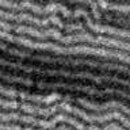
09/09/2015
The ALBA Synchrotron in the Development of Future Computers
The ALBA Synchrotron in the Development of Future Computers
A team of researchers from the Spanish National Research Council (CSIC) and the ALBA Synchrotron has developed a new method to produce and characterize cobalt ferrite nanostructures with higher quality than ever before. The study, published last month in Advanced Materials, has implications in spintronics, a technology for developing advanced computing systems.
Growth and initial characterization of the islands were performed at the low-energy electron and photoemission electron microscope of the CIRCE beamline at the ALBA Synchrotron. Cobalt and iron atoms were deposited on a substrate at high temperature, while being exposed to oxygen.
Beside, earlier this month, an article about the use of ALBA light in the study of magnetization of buried-covered films was published in Nature Communications: The technology of magnetic storage of digital data has made enormous progress in the last two decades thanks to the scientific advances in nanomagnetism, resulting in the creation of smaller devices with larger capacities and better performances.
A group of scientists from the ALBA Synchrotron, the University of Oviedo, the University of Porto and the National Microelectronics Centre (CNM-CSIC) has carried out a research that sheds light on the magnetic domains in ultrathin magnetic films. Using ALBA's X-ray transmission microscope, the researchers have been able to precisely measure the angles of magnetization of the magnetic domains and to determine how they change when they are buried – covered by other material film.
Image: image of the magnetic domains, Blanco-Roldán et al., see Reference #2
References:
Growth and initial characterization of the islands were performed at the low-energy electron and photoemission electron microscope of the CIRCE beamline at the ALBA Synchrotron. Cobalt and iron atoms were deposited on a substrate at high temperature, while being exposed to oxygen.
Beside, earlier this month, an article about the use of ALBA light in the study of magnetization of buried-covered films was published in Nature Communications: The technology of magnetic storage of digital data has made enormous progress in the last two decades thanks to the scientific advances in nanomagnetism, resulting in the creation of smaller devices with larger capacities and better performances.
A group of scientists from the ALBA Synchrotron, the University of Oviedo, the University of Porto and the National Microelectronics Centre (CNM-CSIC) has carried out a research that sheds light on the magnetic domains in ultrathin magnetic films. Using ALBA's X-ray transmission microscope, the researchers have been able to precisely measure the angles of magnetization of the magnetic domains and to determine how they change when they are buried – covered by other material film.
Image: image of the magnetic domains, Blanco-Roldán et al., see Reference #2
References:
- L. Martín-García, A. Quesada, C. Munuera, J.F. Fernández, M. García-Hernández, M. Foerster, L. Aballe, J. de la Figuera. Atomically flat ultrathin cobalt ferrite islands. Advanced Materials. DOI: 10.1002/adma.201502799
- "Nanoscale Imaging of Buried Topological Defects with Quantitative X-Ray Magnetic Microscopy" C. Blanco-Roldán, C. Quirós, A. Sorrentino, A. Hierro-Rodríguez, L.M. Álvarez-Prado, R. Valcárcel, M. Duch, N. Torras, J. Esteve, J.I.Martín, M. Vélez, J.M. Alameda, E. Pereiro, S. Ferrer Nature Communications DOI: 10.1038/NCOMMS9196
More news
18/10/2017
The Sixth Ideas Generation Program Sponsored by the Barcelona Synchrotron Park Has Begun
12/10/2017
Barcelona Synchrotron Park's commitment to Biodiversity
02/10/2017
8 Congresses at the same time: it’s the Barcelona Industry Week!
26/09/2017
50th anniversary: congratulations UAB!
21/09/2017
More than 7,000 foreign companies in Catalonia
13/09/2017
How ALBA Synchrotron Works









